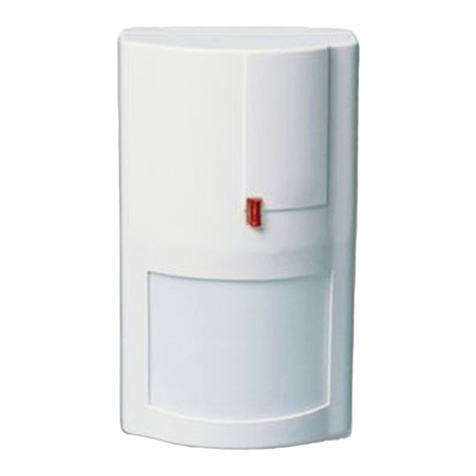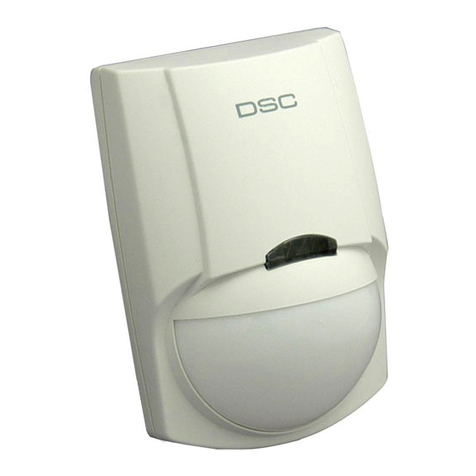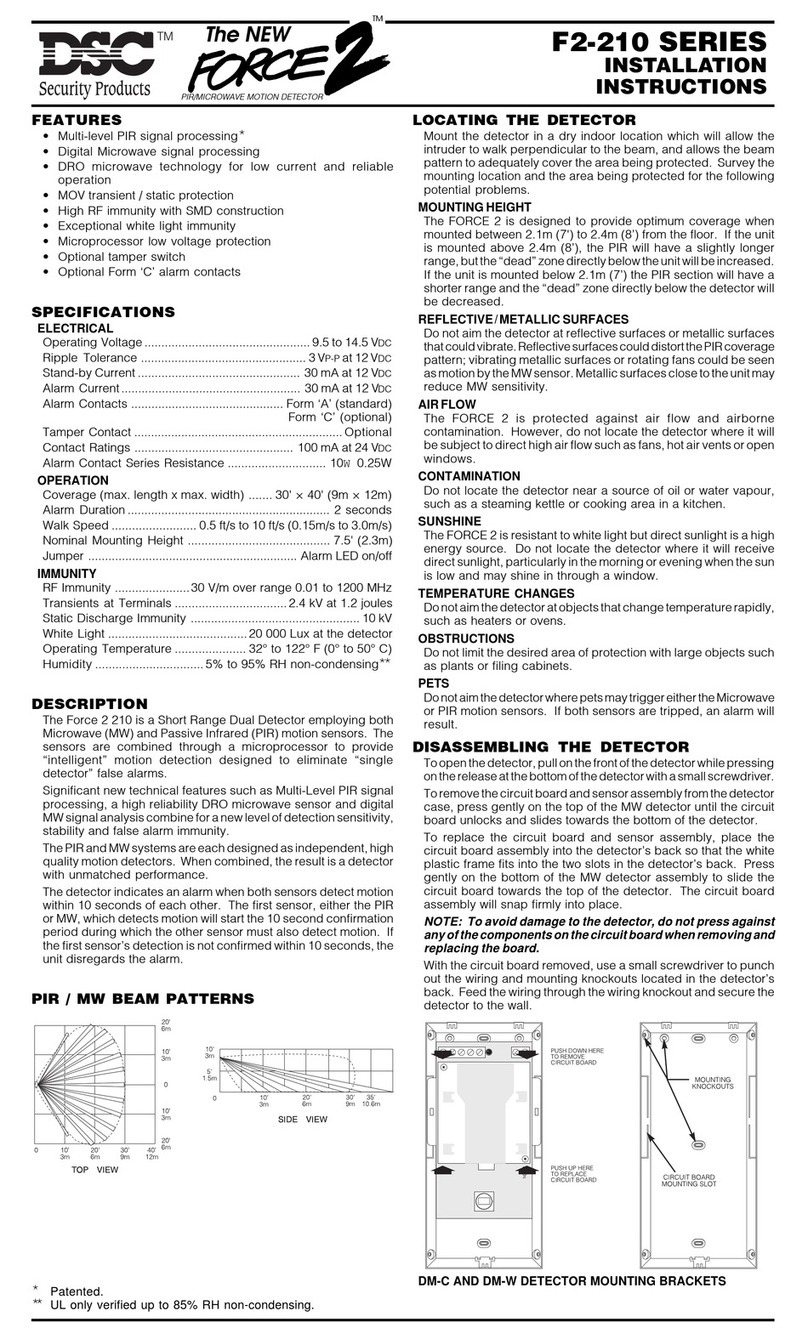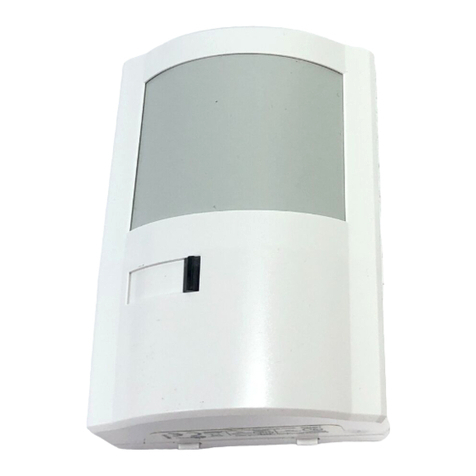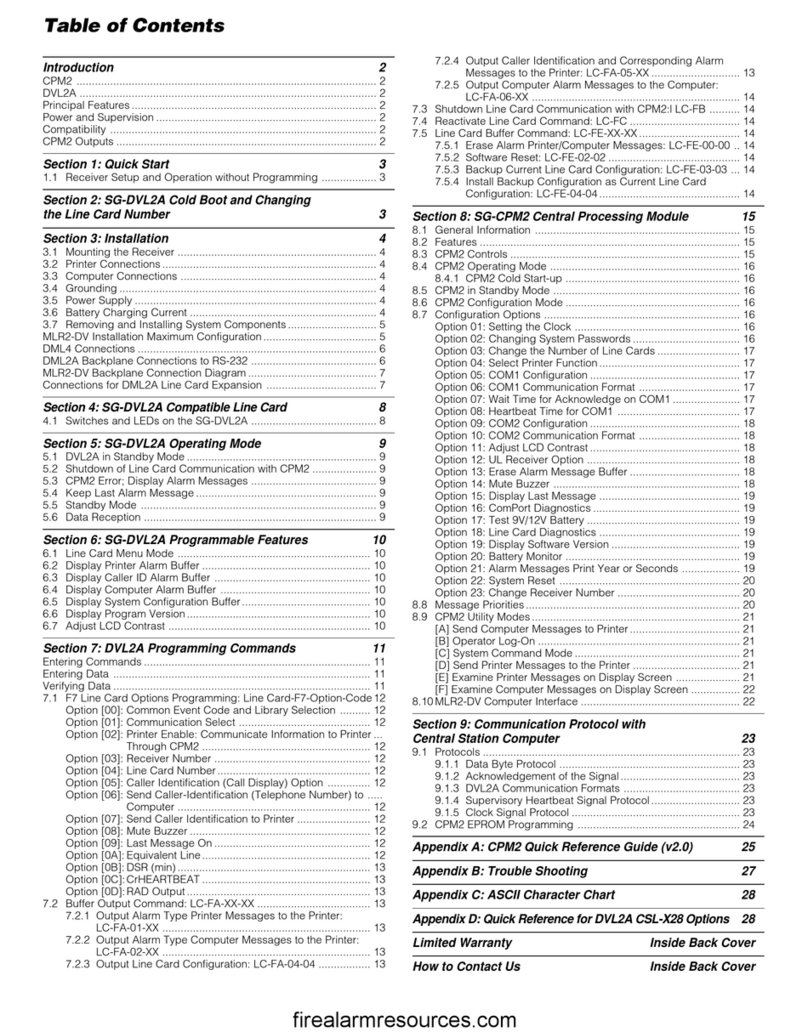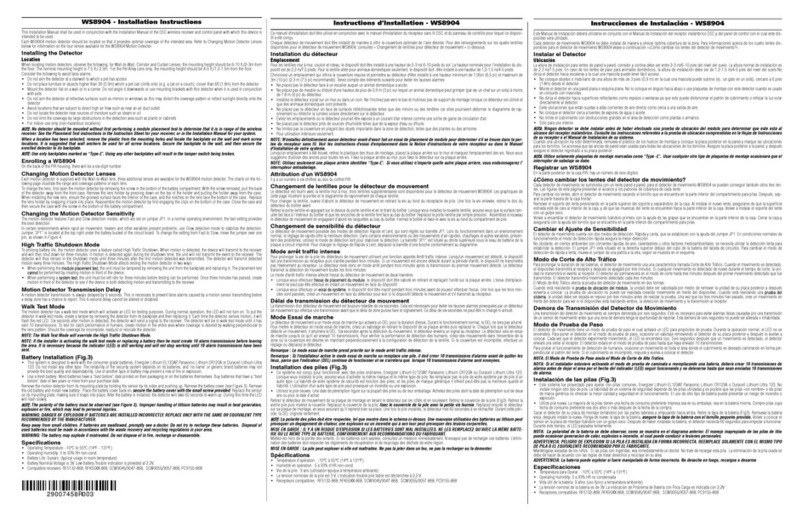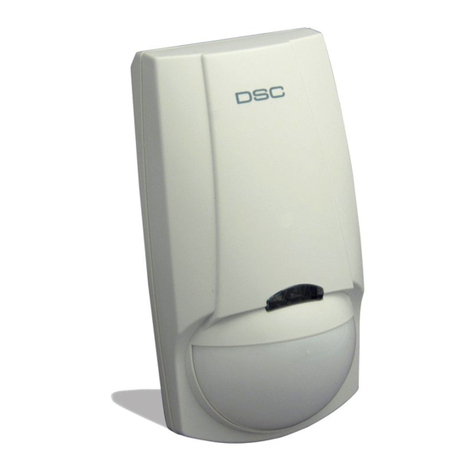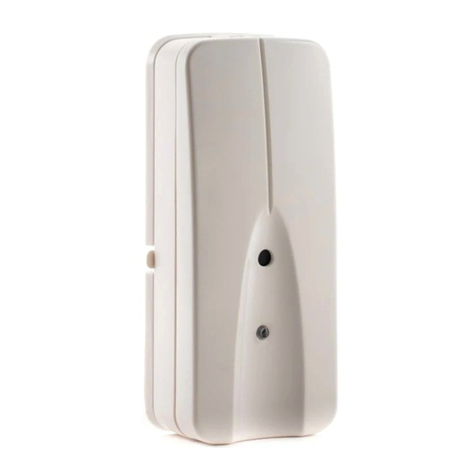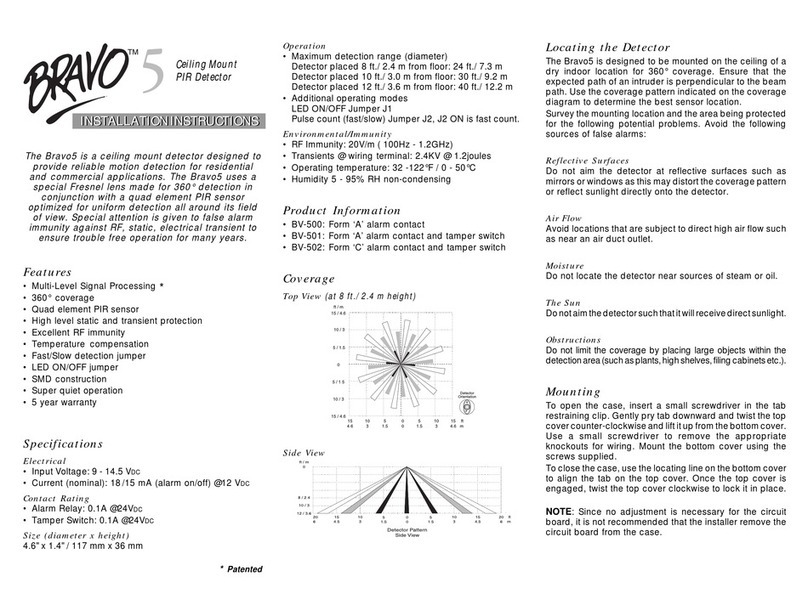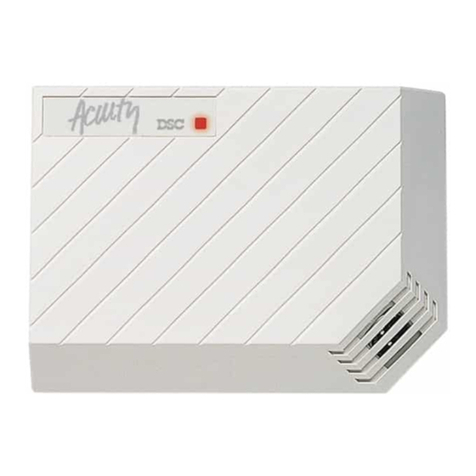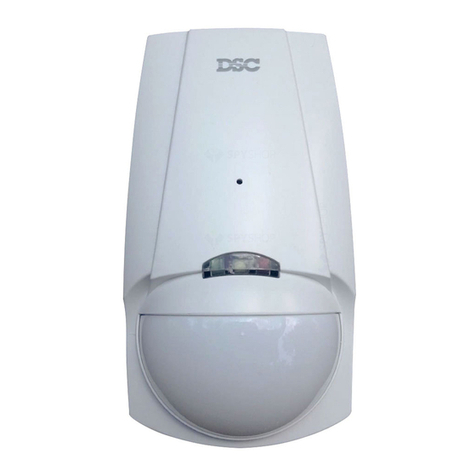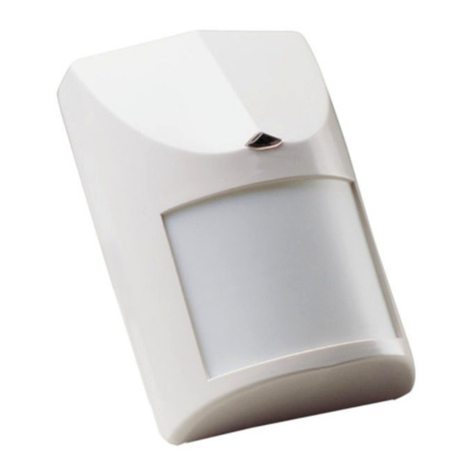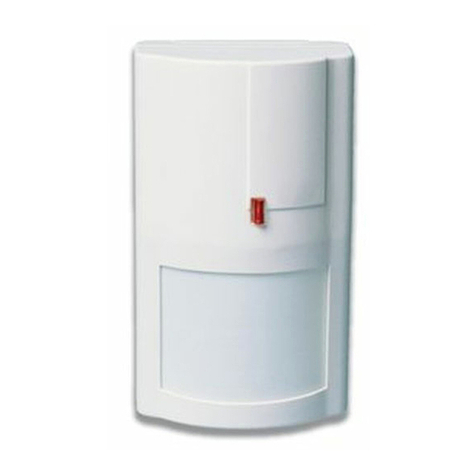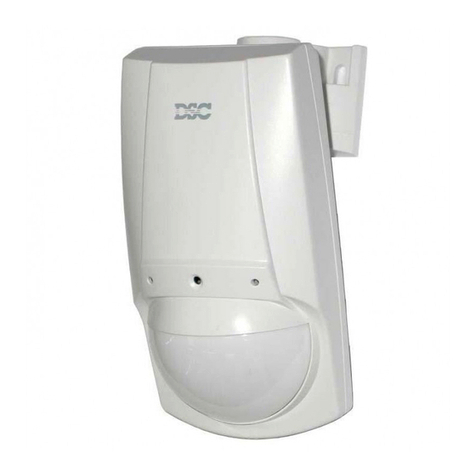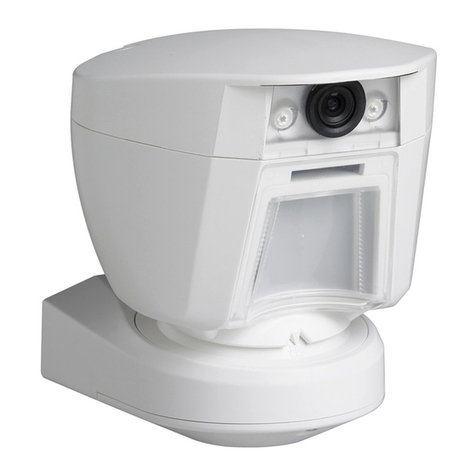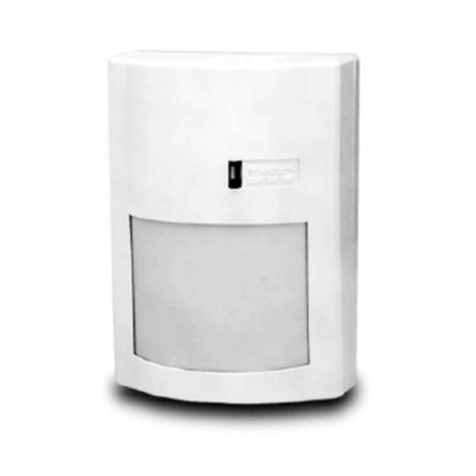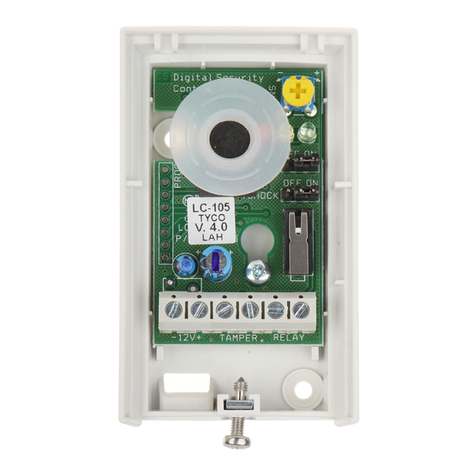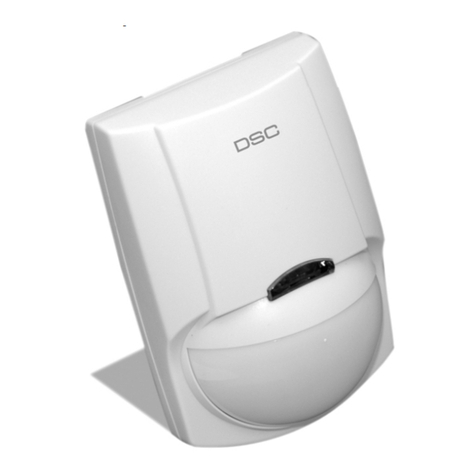POLSKI
W czujce LC-100-PI / LC-120-PI wykorzystano specjalnie
zaprojektowaną soczewkę optyczną, oraz unikalny
czteroelementowy czujnik pasywnej podczerwieni (QUAD
PIR). Nową elektronikę czujki oparto na układzie ASIC,
który został specjalnie zoptymalizowany w celu
zapobiegania fałszywym alarmom wywoływanym przez
zwierzęta domowe.
Czujki LC-100-PI / LC-120-PI charakteryzują się wysoką
odpornością na światło widzialne. LC-100-PI / LC-120-PI
dostarczana jest wraz z soczewką szerokokątną.
WYBÓR MIEJSCA INSTALACJI
Aby uniknąć fałszywych alarmów, podczas montażu należy
stosować się do poniższych zasad:
MONTAŻ URZĄDZENIA
1.
2.
3.
4.
5.
6.
7.
8.
9.
OPIS ZACISKÓW (Rys. 5)
Zaciski 1 i 2 (oznaczone „T1,T2”):
Zacisk 3
Zacisk 4
Zacisk 5
Zaciski 6 i 7 (oznaczone „12V +/-„):
ITALIANO
Il rivelatore LC-100-PI / LC-120-PI utilizza una speciale
lente, un esclusivo sensore piroelettrico Quad (quattro
elementi) ed una nuova elettronica basata su un’ASIC,
ottimizzati per eliminare i falsi allarmi provocati da animali
domestici. Offre un grado di immunità alla luce visibile
senza precedenti ed è dotato di una capacità di rivelazione
e di una stabilità veramente eccezionali in ogni tipo di
impianto di sicurezza. Il rivelatore LC-100-PI / LC-120-PI è
fornito con una lente volumetrica.
INSTALLAZIONE TYPICA
Scelta della posizione per il montaggio
Evitare le seguenti posizioni
FISSAGGIO
DEL RILEVATORE
1.
2.
3.
4.
5.
6.
7.
8.
9.
INSTALLAZIONE DEL RIVELATORE
Descrizione della morsettiera
Morsetti 1 & 2 - contrassegnati T2 e T1 (SABOTAGGIO).
Morsetto 3 Marcato "NC"
Morsetto 4 Marcato "C"
Morsetto 5 Marcato "NO"
Morsetto 6 - contrassegnato “–”(massa)
Morsetto 7 - contrassegnato “+”(+12V)
FRANCAIS
Le détecteur LC-100-PI / LC-120-PI utilise une lentille
optique spécialement conçue équipée d'un capteur IRP
Quad (quatre éléments) et de nouveaux composants
électroniques basés sur un ASIC pour éliminer les fausses
alarmes provoquées par les petites animaux et les
animaux domestiques. Le LC-100-PI / LC-120-PI offre des
niveaux inégalés d'immunité contre la lumière visible. Le
détecteur offre un niveau exceptionnel de stabilité et
capacité de détection pour toutes les installations de
sécurité. Le LC-100-PI / LC-120-PI est fourni avec une
lentille grand angle.
INSTALLATION TYPIQUE
Sélectionnez l'emplacement de montage
Evitez les emplacements suivants
MONTAGE DU DETECTEUR
1.
2.
3.
4.
5.
6.
7.
8.
9.
INSTALLATION DU DETECTEUR
Connexions de la plaque à bornes
Bornes 1 & 2 - Signalées par T2 et T1 (TAMPER)
Borne 3 marqué "NC"
Borne 4 marqué "C"
Borne 5 marqué "NO"
Borne 6 - Signalée par - (GND)
Borne 7 - Signalée par
+
(+12 V)
ESPANOL
El detector LC-100-PI / LC-120-PI utiliza una lente óptica
especialmente diseñada junto con un sensor PIR especial
Quad (de cuatro elementos) y un nuevo circuito integrado
de aplicación específica (ASIC) optimizado para eliminar
las falsas alarmas provocadas por pequeños animales y
mascotas. El LC-100-PI / LC-120-PI proporciona un grado
de inmunidad sin precedente contra la luz visible. El
detector aporta un grado de detección y de estabilidad
excepcional para cualquier instalación de seguridad. El
LC-100-PI / LC-120-PI está dotado de lentes de gran
angular.
INSTALACIÓN TÍPICA
Seleccione la ubicación de montaje
Evite los siguientes emplazamientos:
MONTAJE DEL DETECTOR
INSTALACIÓN DEL DETECTOR
Terminales 1 y 2 - Marcados como "T2" y "T1" (TAMPER).
Terminal 3 marcado con "NC"
Terminal 4 marcado con "C"
Terminal 5 marcado con "NO"
Terminal 6 - Marcado como "-" (GND).
Terminal 7 - Marcado como "+"(+12 V).
ENGLISH
The LC-100-PI / LC-120-PI detector uses a special designed
optical Lens with unique Quad (Four element) PIR Sensor
and new ASIC based electronics optimized to eliminate
false alarms, caused by small animals and Pets. The LC-
100-PI / LC-120-PI provide unprecedented levels of
immunity against visible light. The Detector offers an
exceptional level of detection capability and stability for
every security installation. The LC-100-PI / LC-120-PI is
supplied with Wide Angle lens.
TYPICAL INSTALLATION
Select mounting location
Avoid the following locations
MOUNTING THE DETECTOR
1.
2.
3.
4.
5.
6.
7.
8.
9.
DETECTOR INSTALLATION
Terminal block connections
Terminals 1 & 2 - Marked T2 and T1 (TAMPER)
Terminal 3 Marked "NC" -
Terminal 4 Marked "C"
Terminal 5 Marked "NO" -
Terminal 6 - Marked - (GND)
Terminal 7 - Marked + (+12V)
LC-100-PI (Form A)
LC-120-PI (Form C)
Detector with Pet Immunity
Detector digital pasivo infrarrojo (PIR) con
inmunidad a mascotas
Détecteur numérique à infrarouge passif (IRP) avec
immunité aux animaux domestiques
Rivelatore digitale PIR con immunità agli animali
domestici
Cyfrowa czujka pasywnej podczerwieni (PIR)
odporna na obecność zwierząt
Fig 1III
I
Fig 2
Fig 3 I
II
